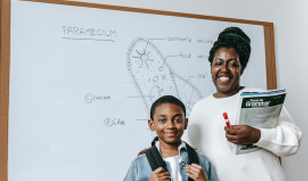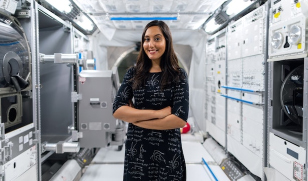The following is an excerpt from AWIS National
“The Association for Women in Science (AWIS) is a nonprofit organization established in 1971, dedicated to achieving equity and full participation for women in science, mathematics, engineering, and technology. AWIS has over 5,000 members in fields spanning the life and physical sciences, mathematics, social science, and engineering. Over 50% of AWIS members have doctorates in their respective fields, and hold positions at all levels of industry, academe, and government.
As part of its efforts to promote the entrance and advancement of women in science, AWIS has a long-standing commitment to fostering the careers of women science professionals. Events at the 76 local chapters across the country facilitate networking between women scientists at all levels and in all career paths. AWIS chapters also encourage the participation of girls and women in science by sponsoring educational activities in schools and communities.
At the national level, AWIS publishes a variety of materials to inform girls and women about science programs and women’s issues, including the bimonthly AWIS Magazine. The organization serves as a voice for women in science by helping to shape national policy through Congressional testimony and by participating in a variety of national coalitions.“


History of AWIS-San Diego Chapter
AWIS San Diego was founded by Dr. Dorothy Hudig (now a Professor at the University of Nevada at Reno), Paula Konigsberg, Barbara Hemmingsen (San Diego State University) and Jeanette A. Thomas. The chapter was founded in the late 1970s or early 1980s. Dr. Hudig places this between 1977 and 1982; Hemmingsen sets the founding in 1983, shortly after she had gotten tenure at SDSU. Dr Donna Simmons arrived in San Diego as a postdoc in 1982 and recalls that she was invited to her first meeting by Dr Barbara Boss, a junior research scientist in another lab at the Salk. The group officially joined the national AWIS organization in 1986.
Simmons recalls that AWIS had more of a presence with graduate students and teachers of undergrads in the east and they were motivated to seek out or start a local chapter when they moved west. Faculty members especially suffered feelings of isolation/exclusion because of being women. Loneliness and anger were motivating factors for the formation of the organization. This was a time when women had to sue in order to get their positions in academia. Simmons remembers, “I know at least one male scientist who commented about the Association for Women in Science ‘are there any?'”
Hemmingsen comments that she was sick of male chauvinism and wanted to be in a group with women scientists for the camaraderie and support that would encourage women to stay in science. The AWIS-SD founders worked in fisheries, government and academia. Biotech was still young, and not yet well developed in San Diego at the time. Most of the women were faculty or equivalent levels, with some postdocs but few students. Simmons says, “They wanted to establish a means for like-minded women in physically separated work places to meet for networking, information sharing and friendship. I think the laid back CA beach life attitude was a bit of a shock to some of the easterners and there was a perceived need for a social milieu that complemented a life in science and was supportive to women in their careers.” Hudig states, “The organization helped us keep our sanity”.
At first, AWIS-SD was run by a Board of Directors although no one had a title. The members met once a month as a self-help group where they shared experiences, engaged in problem-solving and had frank discussions. Meetings were advertised by posting hand written flyers in women’s bathrooms at UCSD, Salk, Scripps, and other institutions. Attendance at meetings ranged from four to twenty people. The topics of the monthly meetings included financial planning, getting a job, writing a CV, grant writing, or the education needed to become a scientist.
AWIS-SD served an important information educational role that was not provided by any other institution. The founders were keen that the work of the organization would lead to changes in opportunities for women in the sciences.
Over time, San Diego science changed, as did AWIS-SD. Increasing numbers of women made it into the faculty of the various academic institutions, reducing their sense of exclusion. Most strikingly was the biotech boom, leading more and more members worked in industry, where they are now the largest demographic in the group. Women scientists also populated careers outside of bench science, so that AWIS members represent diverse roles in law, business, policy, and writing in additional to more traditional research and teaching activities. Membership skyrocketed in the 90s, especially among younger women.
Recognizing San Diego’s biology edge, AWIS-SD founded the wildly successful Women in Bioscience career development conferences in 1993. Successive conferences in alternate years have become a mainstay of the San Diego science calendar. AWIS-SD is now one of the largest chapters in the country. As well as the network and community, it is increasingly a voice for women in science and technology in San Diego and beyond.
Barbara Armstrong interviewed Dorothy Hudig, Professor at the University of Nevada, Reno on February 5, 2004. and Dr. Barbara Hemmingsen, a Professor at San Diego State University, on February 6, 2004. She also conducted an email interview with Donna Simmons. Some editing was provided by Susan Forsburg and Lynne Friedmann.
